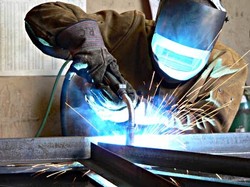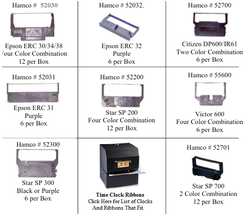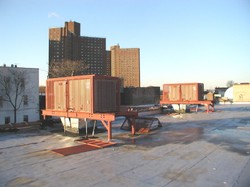3D printing is changing the way that we look at manufacturing as a whole! With the use of support materials in various forms, this technology allows for the creation of virtually whatever you can design! Of course there are some limitations, but this technology is powerful! Read this article to find out more.
The Process Behind 3D Printing
by cwaldo39
3D printing can do some cool stuff, and has changed the way manufacturing works. Check out this article to see how this process works.
Who Uses 3D Printing?
In a nutshell, 3D printing is the layer by layer creation of virtually whatever you want! This technology allows for the creation of various models in a huge variety of materials. If you can design a 3D model, it can likely be made through this technology.
Quite a few audiences use this technology. One popular group of users are medical professionals. This technology allows for the creation of intricate models, such as prosthetic's for limbs, hearing aids, medical diagrams, and special ordered parts.
The corporate world, particularly in engineering, also use this technology. The phone in your pocket was made from a series of prototype models. Those prototype designs are usually made through 3D printing.
Another audience which is starting to lean towards this technology, is the maker movement! Anyone can gain access to this technology through the various online 3D printing services. People are uploading their own clever engineering projects, character models, and cool knick-knacks and science projects.
How Does It Work?
3D printing operates in a variety of styles; some of the styles of this technology include ultraviolet lights "curing" liquid resins. Other forms involve laying down melted plastic materials. Some styles involve lasers melting material together. Others involve adhesive "powder" printing. There really is quite a bit to this technology, but instead of telling you - I'd rather show you.
The video below walks through the process of powder-based printing, using full color sandstone.
A Quick Breakdown
In the video above, a couple prints were made from "full color sandstone," or ZP150. This material uses 3D printing processes, infiltration, and the same technology that your every day 2 dimensional printer uses.
Basically, the models completed are created layer by layer. Per each layer, an adhesive spray glues the powder together. After the powder is glued together, the ink jet will cover the material with whichever color you design with. If you notice, the final product is made in full color.
In a nutshell, the powders will glue together to form the "skeleton" of the model, and the ink jets will hover over each layer of "skeleton" and paint over it. Afterwords, the final print is cleaned up, dipped, and completed!
If you're interested in creating a piece similar to the print in the video, you can use some of the 3D images already uploaded, or you can upload your own 3D model and get a quote.
You might also like
History of Iron WorksIron has been in use since prehistoric times dating back to 4000 BCE. That is...
Stationery An Inclusive IndustryFor an industry to be successful it has to be inclusive. Modern businesses em...
Metal Fabrication Why Steel?The page discusses and informs about the properties of steel and why is it us...


 The Variety Of 3D Printingon 12/07/2012
The Variety Of 3D Printingon 12/07/2012



Comments